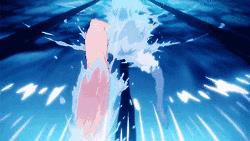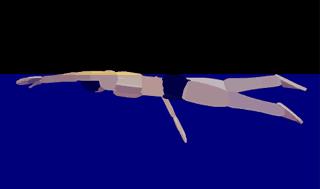Figure 1 moves:
If you are under 6 months old, you can try it after reading the first one.
At this time, you have a skill called "swimming reflex". Put you on your stomach in the water, and when you are immersed in the water, you will paddle your limbs and subconsciously hold your breath, so your body will gain more buoyancy; You will stick to floating for a while, which is conducive to the rescue.
When you get older, the swimming reflex disappears, but it is an indicator of the normal development of the nervous system.

Figure 2 moves:
You will automatically hold your breath because there is a special valve in your throat at 6 months old. Now, you are sexually mature, and somehow you can’t always learn to hold your breath. When you get into the water, you will be so nervous that you will gulp water. If you just don’t mind the beauty of swimming and are in a hurry, I suggest you practice the dog-planing stroke immediately.

Hold your head high, lift your head to the position where your nose and mouth can be exposed to the water, and press the water alternately with your limbs to maintain a sense of rhythm. You can try some rhythms of stepping on some songs you like, so that people standing on the shore look ugly but at least have a good rhythm.
Figure 3 moves:
If you sincerely want to learn swimming, breaststroke! Stable posture, relaxed and lasting strength, and very high practical value.

Draw your arms to your chest and hold the water underwater, support your upper body rhythmically for rapid ventilation, and kick your legs backwards in imitation of frog posture. The details of your legs are as follows: 1. Separate to both sides. Step 2 straighten. 3. Then pinch the water inward.
Figure 4 moves:
But whether you watch sports news or idol drama, if you want to be cool and crazy, you should forget all the above three pictures. Freestyle is really worth learning. Compared with butterfly swimming, it is grandiose and ungrounded. It is low-key and luxurious, which allows you to bring your own aura and help you become a dazzling white strip in the swimming pool.

The body is prone on the water surface and streamlined. During the exercise, the head is kept stable, and the trunk rotates rhythmically around the longitudinal axis of the body for about 40 degrees, and the head is ventilated at this angle.
The action of kicking is basically to maintain the balance of the body, not the core power.
The main driving force of freestyle is in hand.
Then. . .
speed up

From these practical skills, you should have become an excellent swimmer now, and then you can show your swimming skills confidently!
